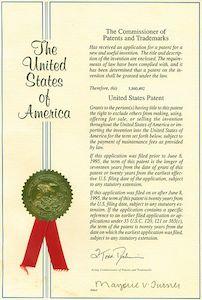BEVERAGE LAW
Defined Terms versus “Plain Meanings” of Words in Patent Claims Construction

A court’s process of interpreting the language of a patent claim during patent infringement litigation is known as “claim construction.” Two questions often emerge after a court rules on claim construction: deference to the trial court’s findings, and the meanings of words used in the claim. Rulings from the Federal Circuit Court of Appeals over the years have at times relied on specific definitions of words provided within the claim itself. At other times, courts have used the plain meaning of the words. A recent Federal Circuit decision, Lightning Ballast Control LLC v. Philips Electronics North America Corp., 744 F.3d 1272 (Fed. Cir. 2014), addresses the question of appellate review but might leave the second question unresolved.
The Federal Circuit ruled that appellate courts may review claim construction de novo, meaning that they are not obligated to defer to the trial court’s findings. Cybor Corporation v. FAS Technologies, Inc., 138 F.3d 1448 (Fed. Cir. 1998). The majority opinion in Lightning Ballast affirmed this view, 744 F.3d at 1292, but it did not address the question of how to define terms used in a patent claim. A dissenting opinion noted this oversight, stating that “Cybor…ignores the realities of the claim construction process.” Id. at 1304 (J. O’Malley, dissenting).
The Federal Circuit seems to have adopted a “specification” standard for claims construction in an en banc decision in Phillips v. AWH Corp., 415 F.3d 1303 (Fed. Cir. 2005). The court, ruling en banc, held that a word’s “ordinary and customary meaning” would be that used by “a person of ordinary skill in the art in question at the time of the invention,” id. at 1313, but also that the words must be read in the context of the overall specification, id. at 1315. Many subsequent decisions have applied this “specification” holding. See Retractable Techs. v. Becton, Dickinson and Co., 653 F.3d 1296, 1305 (Fed. Cir. 2011) (“Claim language must always be read in view of the written description.”)
In some cases, the Federal Circuit seems to have adopted a somewhat different standard than the one in Phillips. A Federal Circuit panel held that the “ordinary and customary meaning” applies except in certain circumstances, such as “when a patentee…acts as his own lexicographer.” Thorner v. Sony Computer Entm’t Am., 669 F.3d 1362, 1365 (Fed. Cir. 2012), citing Vitronics Corp. v. Conceptronic, Inc., 90 F.3d 1576, 1580 (Fed. Cir. 1996); see also Woods & Marine Exhaust Sys. v. Deangelo Marine Exhaust, 692 F.3d 1272, 1283 (Fed. Cir. 2012).
The expansion of the claim construction rule in Thorner and Woods, based on Vitronics, could prove problematic in future cases, since it seems to contradict Phillips. The Federal Circuit has generally held that a three-judge panel cannot overturn a prior en banc decision. Vas-Cath Inc. v. Mahurkar, 935 F. 2d 1555, 1563 (Fed. Cir. 1991). The en banc decision in Phillips cited several parts of Vitronics but not its exceptions to the “ordinary and customary meaning” rule. The court may have to address whether its recent decisions conflict with Phillips‘ holding.
The intellectual property attorneys at Korngut Paleudis LLC have represented clients in New York, New Jersey, and Connecticut for more than 45 years in business and commercial disputes. To speak with a knowledgeable advocate about your business law claim, please contact us today through our website or at (212) 835-6768 in New York City.
More Articles:
Nature of Patent Protection and Patent Rights Under Review by Congress, New York Business Litigation Lawyer Blog, June 1, 2014
Supreme Court Reviews Question of What Constitutes an “Abstract Idea” in Patent Law, New York Business Litigation Lawyer Blog, April 11, 2014
Federal Circuit Rules on Claim Construction in Patent Infringement Case, New York Business Litigation Lawyer Blog, March 7, 2014
Photo credit: By Unbiassed (Own work) [Public domain], via Wikimedia Commons.


